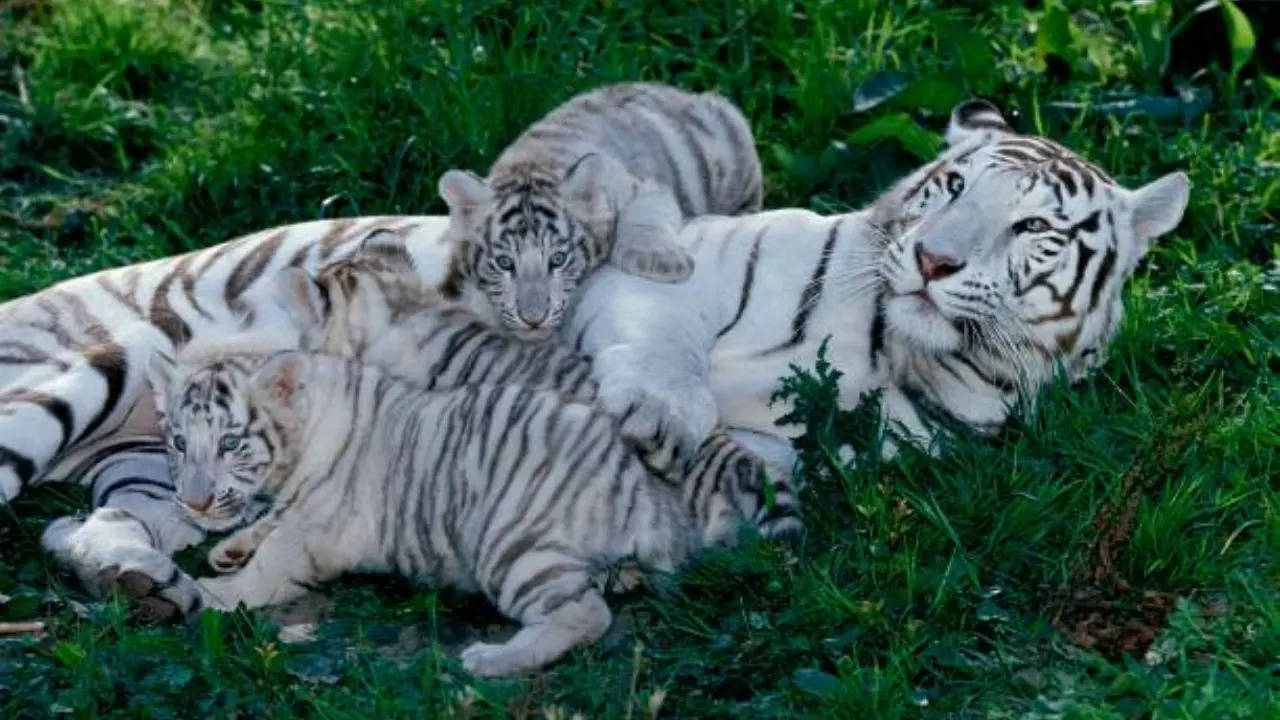White Tiger Raksha Gives Birth To 3 Cubs In Chhattisgarh's Maitri Bagh Zoo, Enclusure's Leucistic Cat Tally Now At 9
The cubs were born on April 28, the zoo officials revealed. However, their births were officially declared on Saturday. The newborns will remain in a dark room for a few months along with the mother for supervision. They will be revealed before the visitors after a period of four months.

Updated Jun 11, 2023 | 12:48 PM IST

Image of a white tiger and cubs used for representation.
Photo : iStock
Raipur: A white tigress gave birth to three cubs in Chhattisgarh's Maitri Bagh Zoo, officials said on Sunday. The birth of the cubs took the total number of white tigers in the zoo to nine, they said.
The birth of the cubs was officially declared on Saturday. The newborns will remain in a dark room for a few months along with the mother for supervision. They will be revealed before the visitors after a period of four months.
The parent tigers were identified as Raksha and Sultan by the zoo authorities.
"On April 28, white tigress Raksha gave birth to three cubs. White tiger Sultan is the father of the cubs. As per veterinary norms, the cubs are kept in a dark room along with the mother for supervision of breastfeeding and other health parameters," Maitri Bagh Zoo in charge NK Jain was quoted as saying by PTI.
In September last year, white tigress Roma gave birth to a cub, which was named 'Singham'. It was also fathered by the white tiger Sultan, the PTI report said.
It was in 1997 that Maitri Bagh received a pair of white tigers for the first time. Named Tarun and Tapsi, they reportedly arrived from the Nandan Kanan Zoo of Odisha.
Maitri Bagh Zoo is located in Bhilai city of Durg district -- about 35 kilometres away from the state capital of Raipur.
White tigers are not a separate species of the bug cats, but regular tigers with a genetic mutation called 'leucism' that affects the colour of fur. The white colour takes away the animal's predatory advantage of hiding amidst bushes and forest covers while hunting -- making survival in the wild difficult for white tigers.
End of Article
Videos





07:41
IMD Briefing On Cyclone Biparjoy | Gujarat & Mumbai On High Alert | Landfall Expected In 24 Hours

04:31
OnePlus 11R, Samsung Galaxy A54, Vivo V27 Pro: Best Smartphones Under Rs 40,000 | Gadget Times

03:50
Realme 11 Pro | Unboxing & First Impression | Gadget Times

05:00
Apple Vision Pro | Here’s everything you need to know | Features, Price, Release Date & More

11:44
Apple's WWDC Event|| Everything You Need To Know | Gadget Times












